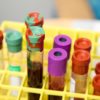
Taking maternal blood up to 7 Days after your delivery
During childbirth you can lose high volumes of blood. We can take the maternal blood sample up to 7 Days after your delivery.

Representing popular Cell Banks in the UK
Our phlebotomists have successfully collected many samples from hundreds of different families in the United Kingdom for Popular Cell Banks in the United Kingdom .

Gift package for when choosing your cell company through us
You will get a free blood test for checking FBC + 5-part Diff, ESR, Urea, Creatinine, Bilirubin, Alkaline, phosphatase, AST, ALT, Gamma-GT, Protein (Total), Albumin, Globulin, Calcium, Phosphate, Uric Acid, Glucose, Cholesterol, Triglycerides

Assigning a second backup in an emergency
in order to provide the most reliable service, we provide you with a second backup. In the unlikely event that both of your phlebotomists are unavailable, a second back up can be arranged for you by calling the 24 hour emergency number on (020) 3633 2603.
Frequently Asked Questions
Why Choose Go2clinic?
Which? Who? What? Why? When?
We have tried to include the most frequently asked questions by our clients and our answers. however if you cannot find what you are looking for here please feel free to call us on the following number.
We would be glad to help you.(020) 3633 2603
-
Which Cell Bank should I register with?
Here at Go2 Clinic we have always stayed impartial. We do not recommend one Cell Bank over another. However you should make sure your Cell Bank is a licenced establishment.
-
Is Cord Blood banking available on the NHS?
Yes. However, the NHS provides a public rather than a private bank. The Service is free of charge. You donate your cord blood and it is made available for public use. There are not many NHS hospitals that collect for the public bank. If you store in a private bank your sample will be stored for your family use only. Virgin Health Bank offers both Private and Public banking.
-
Informing your doctor and midwife
Anyone who would like to bank their baby’s cord blood and/or cord tissue need to talk to their midwife well before the delivery date to ensure the collection can take place. Should the hospital be unable to collect the cord blood/tissue the relevant Stem Cell bank should be able to arrange for a qualified health care professional, covered by their own HTA license, to attend the birth and collect the blood on your behalf.
-
Booking your phlebotomy service
You can either book your phlebotomist through your cell bank or just call us directly to book your phlebotomist. Our standard rate for this service is £300.By clicking on the link below you will have access to our online application form. Upon receipt of your form, we will contact you to confirm your booking. Apply now
-
Why Choose Go2clinic?
We have the largest national coverage in the UK.
Our Phlebotomists are all fully trained, CRB checked and very experienced in their field
Two phlebotomists are assigned to each client and you will have access to a man handled 24/7 telephone helpline.
-
Can I withdraw consent at anytime?
We fully adhere to the regulations of the Human Tissue Authority (HTA). We would only do a collection on your behalf after you have provided us with your consent. for example, if you have paid for cord tissue collection and cord blood collection but suddenly change your mind and no longer wish your cord tissue to be collected, you can just instruct your phlebotomist and he or she will follow your orders accordingly. you can then discuss a refund from your cell bank for removal of a service.
-
What if my phlebotomist is not available when I go into labour?
It is quite possible that at times your Primary Phlebotomist may not be available when you are in established labour. That’s why every client is assigned two phlebotomists. one of them will be the Primary Phlebotomist and the other will be their back up. Therefore in case when the Primary is not available, you should call your back up to attend to you. In the very unlikely event that both your phlebotomists are unavailable during your labour, there is a 24 hour number where you can speak to an on-call coordinator and ask for an immediate back up. The Number is:
-
How do I keep my phlebotomist updated with my labour progress?
We suggest that as soon as your contractions start you should contact your Primary Phlebotomist. Then when you go to hospital you should inform your Primary Phlebotomist again. At this stage they will not leave for the hospital yet but they would be on full alert knowing that their client is in active labour. Upon your arrival at the hospital your midwife will give you a Vaginal Examination (VEs) and would tell you how far dilated your cervix is. For example this could be 3-4 cm. All these cervical dilation information should be passed to your primary phlebotomist. Normally midwives do a VE every four hours. You can text these information to your Primary Phlebotomist in the early stages of your labour, however we recommend that you should call your phlebotomist with updates when you are in the final stages of your labour (i.e. after you have reached 6 cm of cervical dilation). This is to ensure they would not miss your updates especially if this is in the middle of the night when text message tones can not wake your phlebotomist up.
-
When should the phlebotomist leave for the hospital?
Our Phlebotomists have been fully trained in judging the approximate right time for leaving for the hospital. By keeping them posted with the results of your examinations, they can get a rough idea of when to leave for the hospital. This can vary from case to case but the general trend is that Phlebotomists leave for the hospital when the cervical dilation has reached 8-9 cm. This is only true for the mums who are expecting their first baby. If the expecting mum is having her second or third baby, then the phlebotomist would leave for the hospital as soon as the expecting mum’s cervix has reached 6-7 cm of dilation.
-
What happens when the phlebotomist arrives?
On your first encounter with our Phlebotomist, he or she would first greet you and introduce themselves by showing you their G2C ID badge. They would then double check with you that you are consenting for them to do your cord blood/tissue collection. They would also get consent from you to get a sample of blood from yourself. After that, they would take the kit away from you and go to another room also known as the Sluice room to prepare themselves and set the kit up for the collection.
-
How is cord blood collected?
The process of cord blood collection is non-invasive to the mother or baby. It is simple, painless, and non-disruptive – taking less than 20 minutes to complete. After the baby is born and the placenta is delivered, the umbilical cord is clamped and cut, the blood is collected by the phlebotomist using a self contained sterile kit, the collection usually takes place in a separate room.
-
In utero or ex utero cord blood collection: which is better?
Ex utero collection
Ex utero collection is the extraction of cord blood from the placenta after it has been delivered.In utero collection
In utero collection is the extraction of cord blood from the placenta after the baby is born and before the placenta is delivered. Normally, right after birth a good length of the cord would be hanging from the mother. All the phlebotomist has to do is to go to the tip of the cord and perform the collection. The phlebotomist does not touch the mother. This procedure is non-invasive and certainly not painful. Our Phlebotomist respect the dignity of the mother at all times during the collection. Bear in mind that some of our Phlebotomists are male and if you mind this you can always ask for a female phlebotomist to attend you for this purpose. In this method, the placenta is still warm and has less clots and at times it yeilds more volume compared to the Ex utero method. Also it is important to note that sometimes placentas fail to detach themselves from the uterine wall a condition known as “retained placenta”. At such events, In utero collections can save the day. Sometimes when placentas are being manually removed from the mother, the cord can snap and that can lead to the loss of all of the cord blood. In other words, Mothers who choose the In utero method, don’t have to worry about cord snaps or retained placentas. While as Cord Blood phlebotomists, we prefer the In utero method, the choice is yours. Some studies have shown that the difference between the two methods are not significant but in practice our experience shows that going through the In utero method is always better and safer because even if it fails, we still have another chance! i.e. we can wait for the placenta to be delivered and attemp the collection Ex utero. But if we don’t do the In utero first and leave everything to chance by waiting for the placenta to arrive, then we must suffice to whatever we can get from the placenta after it is out. Remember we work against time here. normally the window between the time of birth of the baby and the time that a cord blood sample can be successfully collected is about half an hour on average. Choosing the ex utero method is safe of course and in fact the majority of our collections are Ex utero for the following reasons: 1- Some mothers do not know the advantage of having their cord blood collection by the In utero method, 2- Some do know the advantage but for personal, religious or cultural reasons do not wish to have the In utero method. If you prefer your cord blood to be collected In utero, please advise your midwife and the rest of the medical team about your wish and instruct your phlebotomist to perform your collection In utero. If you have more questions regarding this subject please feel free to call us on our 24 hour number, being (020) 3633 2603 and we will be happy to help you. -
Physiological 3rd stage of Labour and Delayed Clamping
Physiological 3rd stage of Labour (i.e. not having an injection to hasten the delivery of the placenta), can to some extent affect the sample in comparison to having an active third stage (having the injection to deliver the placenta). In a Physiological 3rd Stage, after your baby is born, the cord is left attached to the baby until it has stopped pulsating. This means the bulk of blood in the cord will pass through to the baby, leaving only a small volume left for collection if not already clotted. Please be aware that whichever method you choose for your third stage it cannot guarantee a high volume collection. This is due to; personal anatomy, factors during the birth process or the third stage itself. Make sure you talk to your Midwife about your options and which would be safest for you or your baby. Whatever your choice, we will only follow your instructions and shall only make a collection when we have your consent. If you ask for our opinion however, we would say that the time that the placenta should be attached to the baby after birth should not be any longer than 1-2 minutes if a reasonable amount of cord blood is desired.
-
What if I have a homebirth or a C-Section?
Some of our clients opt for a home birth or a planned C-Section. A collection is still possible if you have a homebirth, water birth, induction or a caesarean section. If you are having a home birth there needs to be room/space available with a raised surface (like a table) for the phlebotomist to obtain the sample. They used raised surfaces so gravity can help them in collecting your samples. They will not interfere with your birthing process and help preserve your privacy. If you are having a planned caesarean section your surgeon and midwife need to be aware of a collection taking place so they know of the phlebotomist’s presence and can instruct them to the appropriate place to wait.
-
What is the maternal blood for?
The maternal blood draw is tested for infectious diseases using screening tests and confirmatory tests, which are designed to detect specific infectious disease markers (IDMs) from blood borne pathogens. A blood borne pathogen is any infectious disease that is specifically passed through blood or blood products. Cord blood banks are required to test all maternal blood for the following infectious diseases: • Hepatitis B Virus • Hepatitis C Virus (HCV) • Human Immunodeficiency Virus Types 1 and 2 (AIDS) • Human T-Lymphotropic Virus Types I/II (HTLV I/II) • Syphilis
-
What happens after the samples are collected?
After your Phlebotomist has collected all your samples, they would put everything back in the kit and then he or she would seal the kit and place it in a courier bag. This would then be ready for shipment. All you have to do at this stage is to use the phone number that your Cell Bank has provided to you to call a courier for picking the samples up from the hospital. Once your phlebotomist hands the kit over to you, he or she would leave. This is your responsibility to call the courier. While awaiting a pick up, you should keep the kit at the room temperature and take it with you wherever you go or are transfered in the hospital until the courier arrives and takes it from you.
-
Ethical and/or religious implications?
Cord blood & Tissue storage is completely legal and regulated in the United Kingdom. Embryonic Stem Cells have always had religious and ethical implications. Although they are different however, at times Cord Blood stem cells get confused with embryonic stem cells. Cord blood stem cells are collected aseptically by a qualified and trained Health Care professional. The cord/placental blood and tissue are classed as waste products and are normally discarded; therefore, this does not run into the same array of ethical and religious issues associated with embryonic stem cells.
-
Can Cord Blood Stem Cells be used for any member of my family?
The cord blood is a 100% match for the donor (the baby) and a 1 in 4 (25%) match for siblings and a probable match for the parents.